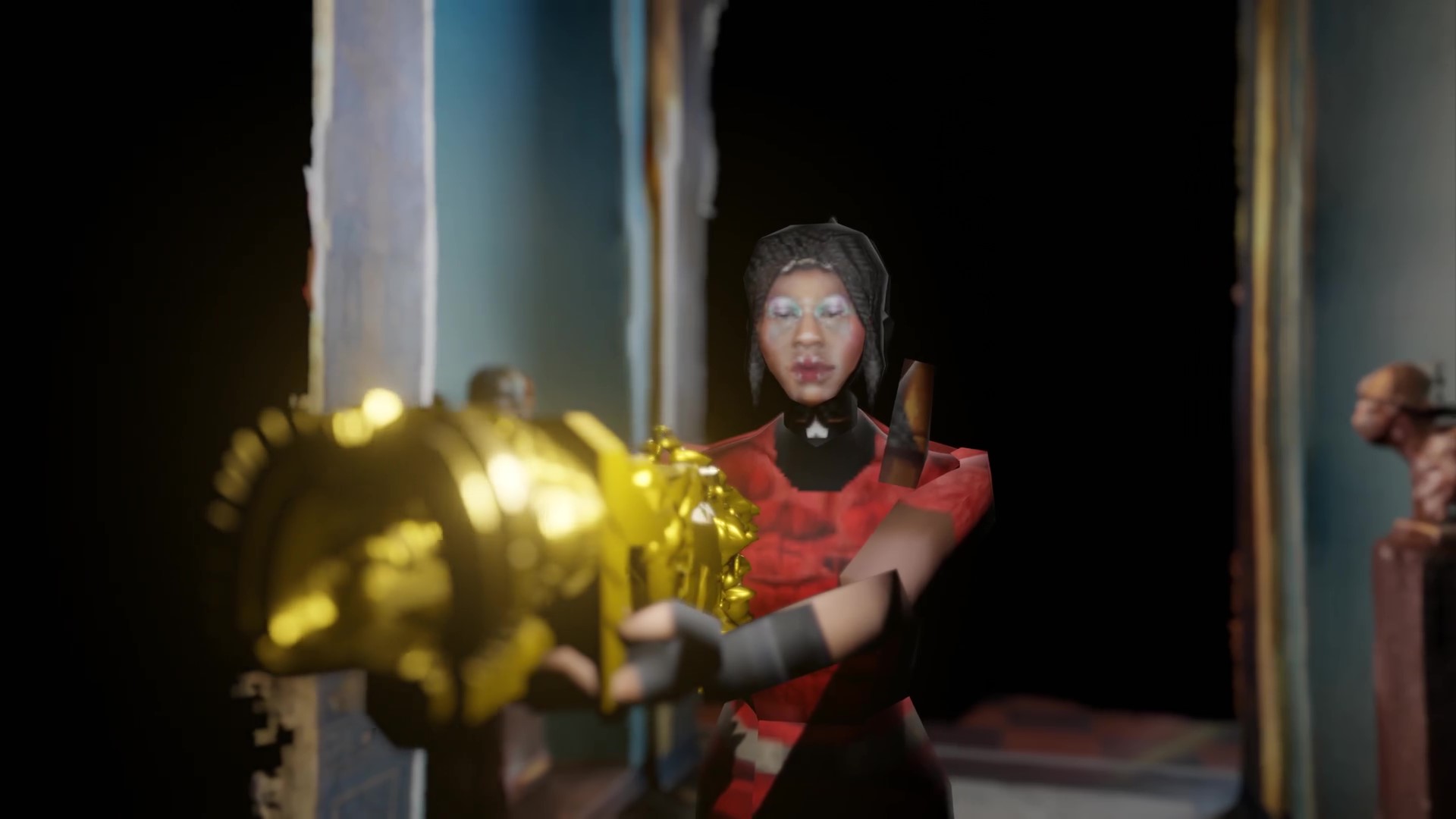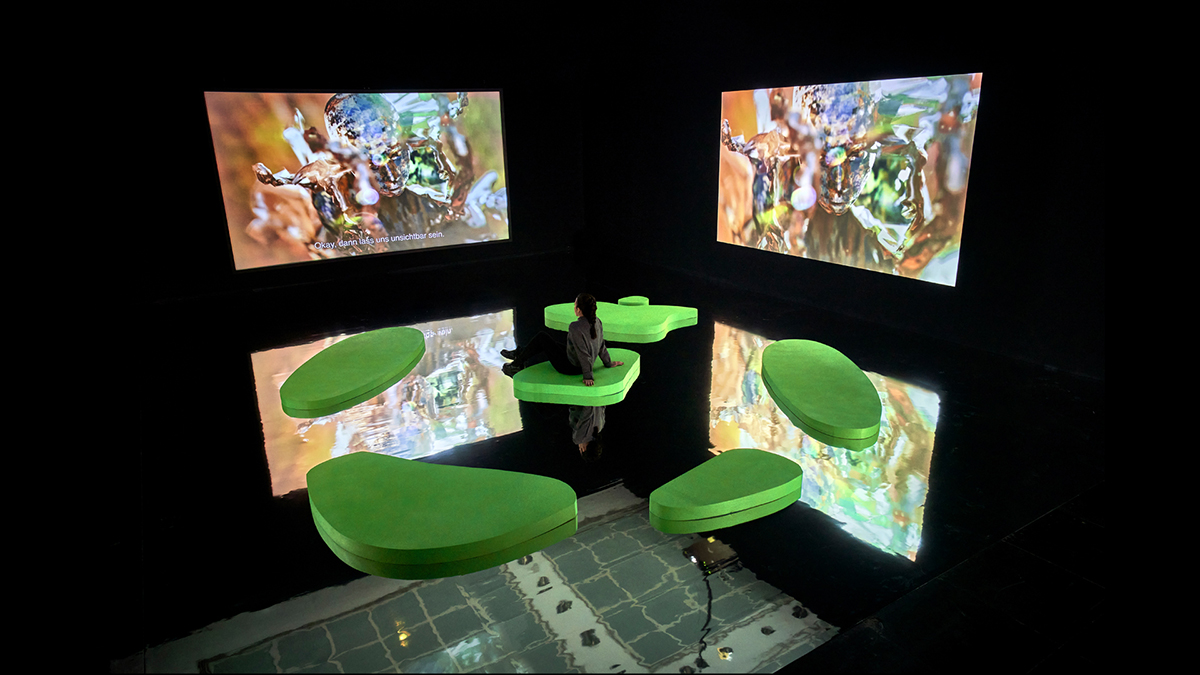The ‘metaverse’– broadly defined as an always-online and persistent spatial virtual world – has recently received global attention with Mark Zuckerberg’s claim to it with the rebranding of Facebook to Meta. However, the idea of a metaverse is not new and for the last few years commentators and sections of industry and society have increasingly told us that the metaverse will ‘change everything’. But what could that change look like for cultural institutions? How and why should they engage with the construction of the metaverse? And for whose benefit?
Since March 2020, repeated lockdowns and restrictions on physical experience resulting from Covid-19 has meant cultural organisations have been increasingly compelled to turn to the digital space as the primary arena for communicating with and presenting work to the public. Yet competing for online audiences with the likes of Netflix, 24-hour news, Reddit and AAA gaming, has proved to be an immense challenge.

The ‘metaverse’ is a term coined by Neal Stephenson in the novel Snow Crash in 1992 that describes the mostly dystopian potential of the encroaching web. While lockdowns presented a somewhat extreme (and hence skewed) scenario of almost total reliance on digital platforms and spaces for social interaction and cultural experiences, they acted as a catalyst for accelerating the development and public awareness of the metaverse and have shifted understanding of what ‘digital’ is, and as a consequence, it is no longer possible to speak of physical and digital as separate realms. It’s important to add here that what we are referring to is not virtual reality or augmented reality glasses, but the planetary scale infrastructure project that is the future of the internet.
It is this significant shift that could be viewed as one of the greatest challenges to all cultural institutions in terms of their role as public interest organisations, as they consider their digital strategies post-pandemic. It seems clear that current methods, mostly grounded in digitally amplifying and building on the physical space, whether by drawing people to physical spaces or understanding ‘digital’ as a set of tools, are no longer sufficient and what is required is a more profound shift in thinking, planning and investment in emerging technological spaces if they are to represent and satisfy the needs and interests of their audiences.
Currently, the most sophisticated advanced virtual environments can be found in video games, ranging from niche independent titles to Massively Multiplayer Online (MMO) worlds, as well as any other virtual experience built with game technologies. At the same time, greater integration of video game infrastructure and experiences into all spheres of life means that advanced virtual environments are not sealed-off worlds with their own rules; rather, their logics infiltrate and enmesh with all aspects of social, cultural, and economic interaction, whether online or offline.
So, what could the metaverse mean for museums and their audiences?
The digitisation of collections could be expanded to allow them to take on a parallel, digital life of their own. The boundaries of digitally produced ‘objects’ are much more fluid, not only in terms of the possibility of multiple, evolving iterations, but also with regard to how these objects transform in different context, enabling audiences to go on a unique journey of discovery and interaction, as is evident in game worlds, where moving through an environment allows one to become familiar with its various objects and structures from a number of perspectives.
So, the metaverse might increase opportunities for interaction with audiences around a project, exhibition or collection, building dedicated communities and creating experiences that can be framed by virtual worlds and extend beyond them. Advanced virtual environments are discoverable and layered inhabitable spaces that can not only enhance the relationship with existing audiences but can help institutions to engage with and discover new ones, people who may not usually consider visiting a museum. The narrative power of such worlds has the ability to extend its story beyond its virtual confines through user-created content and connections to other spheres, platforms and contexts.

Our friends at the V&A have been with us on this journey of discovery, their Curator of Digital Design Natalie Kane, notes quite rightly, that we are way beyond the point where you plant something on your head, or plug something in, and call that ‘digital’. Our thinking and research have been recently released in our latest annual strategic briefing FUTURE ART ECOSYSTEMS: ART x METAVERSE, that explores more about these ideas and the need for the public cultural sector to take more of proactive role in how this space develops.
For museums like the V&A, the opportunities and creative potential to extend their reach through this next phase of experimentation with advanced technologies is incredibly exciting but also requires new skills, infrastructures and strategies to develop. It is exciting to see the V&A embrace this thinking and to watch where the metaverse takes them.


Very interesting article! My favorite part is when you wrote about how it will affect the museum and their audiences. Very important aspect! I have also found an article about metaverse that is covering different aspect of how it will change our future and its origin. Here is the article: https://www.valuer.ai/blog/what-is-the-metaverse-just-another-buzzword
Let me know your thought!
https://www.merriam-webster.com/words-at-play/affect-vs-effect-usage-difference